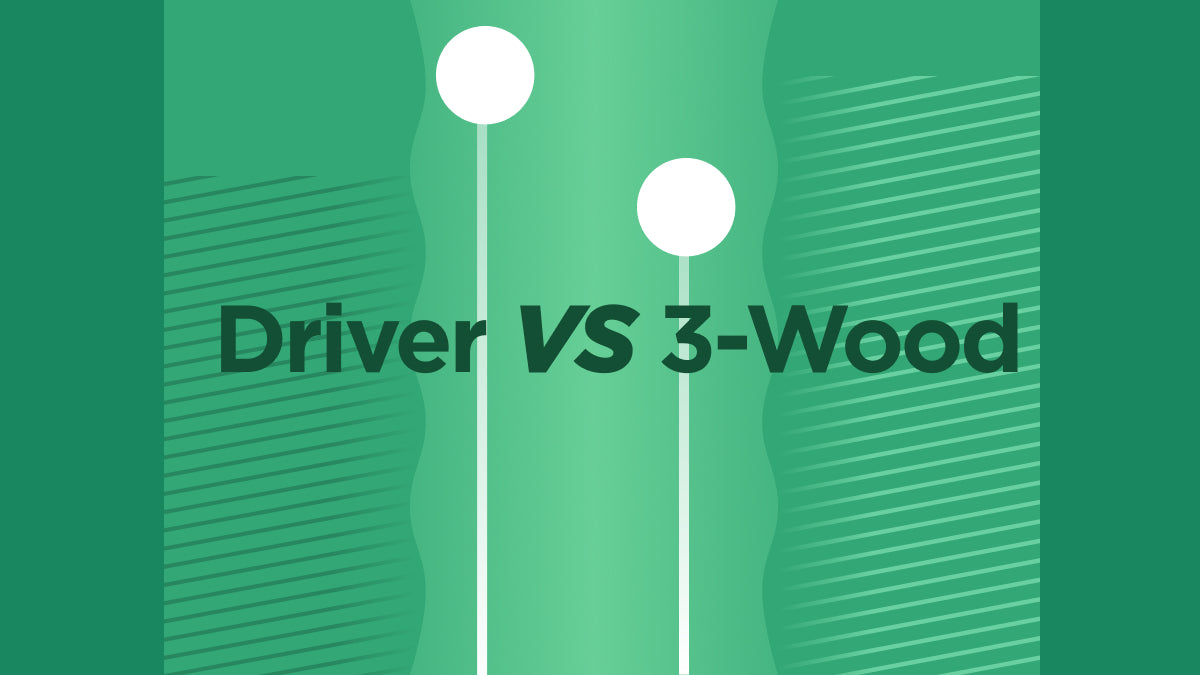3 Wood VS Driver: Is the accuracy worth the sacrificed distance?

Have you ever had one of those days where your Driver is just not behaving? Luckily golfers have other options when their “Big Stick” is a little too crooked, the next closest being: a 3 wood.
Look, 3 woods are not always the easiest, most forgiving club to hit. Especially off the deck. They are almost as long as a driver, have a small head, and many golfers struggle to hit the face of a driver let alone with their 3 wood. It really does beg the question- why even carry a 3 wood?
After reading an article from Golf.com on why most amateur golfers shouldn’t carry a 3W, we wanted to dig a little deeper into the Arccos numbers to see if the data agreed!
Are 3 woods a great club to rely on when the driver is misbehaving? They do have a few extra degrees of loft which does help with forgiveness and are slightly shorter than a driver which could help with consistency…right? Let’s check out the advantages (or lack there of) of having a 3 wood in the bag.
The great debate of driver vs 3 wood has been an age old argument with no real data to back it up. Not anymore baby! Here are the numbers of three different levels of golfers, all pulled from Arccos Data. (We also gave this data to Golf Monthly, check out their take.)
Fairly Fairway
According to the Golf Course Industry website, “Fairway widths range from 25 to 65 yards, with medium widths of 35 to 45 yards. Widths vary for a variety of reasons, including course theme, hole design, natural conditions and the effective throw of the irrigation system.”
Thanks to the power of Arccos, we know if players landed in the fairway from their tee shots (with any club used). Looking at tee shots using both a Driver and tee shots with a 3W we wanted to compare the accuracy across all golfers.

Moving Mishits
Across all skill levels, the average Fairway% for Driver was 45.5% and for 3W 46.4%. The difference being .9% difference inaccuracy when considering fairways. However the median distances were 12 yards apart (Driver: 226y, 3W: 214y). When looking at strokes gained… distance is key to improving scores, so losing an entire club length is more likely to adversely affect your scores. So for fairway shots it's obvious that distance matters more.. But do big hits really mean big misses?
Extending from the centreline we looked outside of 30 yards and outside of 40 yards for both clubs to see just what those misses might look like. Inside 30 yards from the centreline the difference between Driver (78%) and 3W (81.2%) is only 3.1% better accuracy. Inside 40 yards from the centreline is an even smaller gap between Driver (89.3%) and 3W (91.6%) for 2.3% difference in accuracy (or inaccuracy for that matter).
Is losing an entire club distance worth 3.1% (30y)/2.3%(40y) improved accuracy? Probably not… although it would depend on the course. Maybe playing up an alternative fairway was the real strategy here (or so we tell ourselves)… But this is looking at ALL golfers, does this change when we look at good golfers vs high handicappers?
Scratch That
The scratch golfer proves that there is not a huge benefit to hitting 3 wood off the tee. Hitting only two percent more fairways is not enough accuracy gained to justify giving up 15 yards off the tee, especially when we know that distance is top dog in better scoring.

But hey, maybe it’s different for our 20 handicap!
Nope. Similarly to the scratch golfer, 20 handicaps are sacrificing a lot of yardage for not many more fairways hit. Yeesh, really looking bleak for anyone out there who really loves their 3 wood.

So what gives? Why is this club so hard to hit? It seems like the only people who should be carrying a 3 wood are professionals and that is true for the most part. 56 out of the top 100 players on the PGA Tour use a 3 wood and 28 of those players use both a 3 wood and a 5 wood. These players are also using their woods in varying ways both off the tee and off the fairway.
There can be days when you are in a fight with your Driver, and a hot date with your 3W—in which case it's handy to have both in the bag. This usually just means you need some couples counselling sessions with your Driver and your local therapist—AKA your teaching pro. But with the low loft of a 3w, most amateur golfers will need to strategically rely on an uphill or flat lie more than anything to determine whether they use their 3W for anything other than off the tee.
If you are dying to learn how to hit your 3 wood, check out this video from Arccos Ambassadors Piers Ward and Andy Proudman of Me and My Golf.
Essentially, it’s best to think of a 3 wood as a club that can fill small gaps in your bag, not as a reliable replacement for your driver. It’s also not for everyone and that is A-okay! If your Arccos data is showing you a huge gap between clubs, consider either a 5 wood or a higher launching 3 wood, with at least 16 degrees of loft. While it may be small, those extra degrees of loft will pay off big time in the realm of consistency and forgiveness.
After all, we can’t all be Inbee Park, who hits over 85% of fairways played.